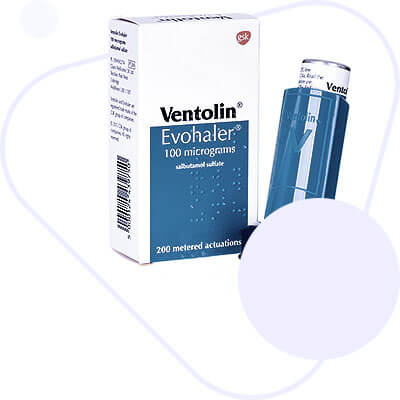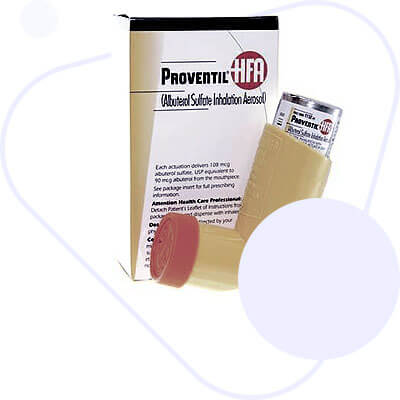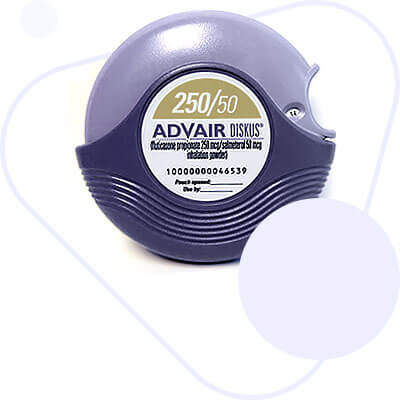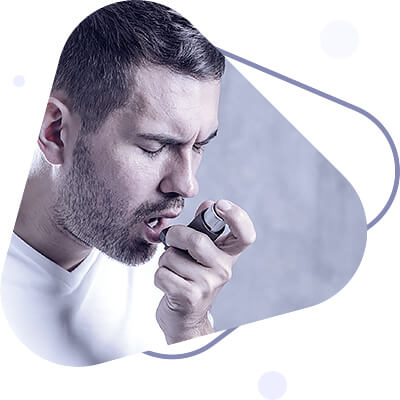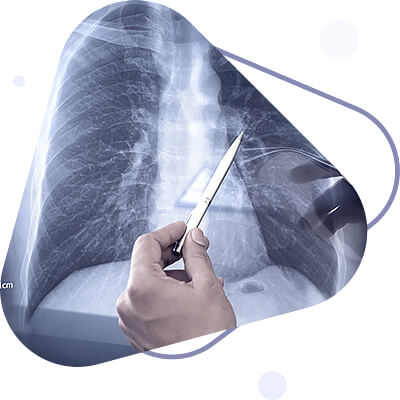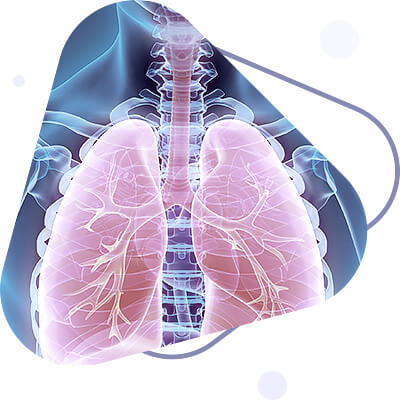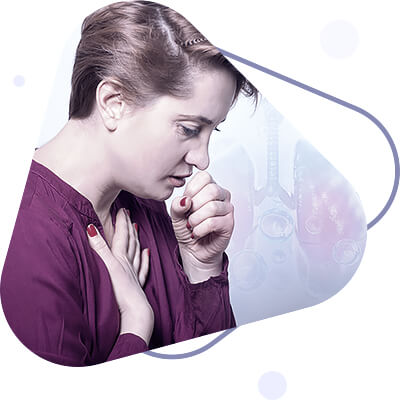Bronchial asthma (asthma bronchiale; Greek asthma heavy breathing, choking) - a disease whose main feature is attacks or periodic states of expiratory choking caused by pathological bronchial hyperresponsiveness. This hyperreactivity is manifested under the influence of various endogenous and exogenous irritants, both causing allergic reactions and acting without allergic mechanisms. The given definition corresponds to the idea of B.A. as a nonspecific syndrome and requires coordination with the tendency to preserve in medical and diagnostic practice the established in the USSR in the 60-70-ies separation from this syndrome concept of allergic B.A. as an independent nosological form.
Classification
There is no generally accepted classification of bronchial asthma. In most countries of Europe and America since 1918 and to date, B.A. is divided into caused by external factors (asthma extrinsic) and associated with internal causes (asthma intrinsic). According to modern concepts, the first corresponds to the concept of non-infectious-allergic, or atopic, bronchial asthma, the second includes cases associated with acute and chronic infectious diseases of the respiratory system, endocrine and psychogenic factors. The so-called aspirin asthma and asthma of physical effort are distinguished as separate variants. In the classification of A. D. Ado and P. K. Bulatov, adopted in the USSR since 1968, two basic forms of B. a. are distinguished: atopic and infectious-allergic. Each of the forms is divided into stages: preasthma, seizure stage, and asthma stage, and the sequence of the stages is not obligatory. In recent years, in the light of the approach to B.a. as a syndrome, such classification, as well as the used terminology, has caused objections. In particular, it's offered to single out non-immunological form of B.a.; to introduce the term "infection-dependent form" that would unite all cases of B.a., connected with infection, including non-immunological mechanisms of bronchospasm; to single out dyshormonal and neuropsychological variants of B.a.
Etiology
Atopic B.a. is caused by allergens of animal and plant origin, as well as those of simple chemical substances that sensitize the airways, usually by inhalation. Food and parasitic allergens can cause sensitization via the hematogenous route. Allergies to house dust are the most common in atopic B. a. in adults (about 90% of cases), in which the sensitizing agent is mainly the mite Dermatophagoides pteronissimus. Less often atopic B. a. is a manifestation of pollinosis - allergy to pollen of wind-dusted plants. In some cases of atopic B. a. a significant role played by sensitization to spores of mold fungi. Sensitization to hair and dander of domestic animals, feathers of birds, dry food for aquarium fish (daphnia), emanations of insects (bees, cockroaches, locusts, butterflies), flour, various food products, platinum salts, and some other chemicals, including drugs (usually by occupational exposure) occur.

The etiology of aspirin B. a. is not clear. Patients have an intolerance to acetyl-salicylic acid, all pyrazolone derivatives (amidopyrine, analgin, baralgin, butadion), as well as indomethacin, mefenamic and flufenamic acids, ibuprofen, voltaren, i.e. most non-steroidal anti-inflammatory drugs. In addition, some patients (from 10 to 30%, according to different data) do not tolerate the yellow food dye tartrazine, which is used in food and pharmaceutical industries, in particular for the manufacture of the yellow coating of pills and tablets.
Infection-dependent B. a. is formed and aggravated in connection with bacterial and especially often viral infections of the respiratory apparatus. According to the works of A.D. Ado school, the main role belongs to bacteria Neisseria perflava and Staphylococcus aureus. A number of researchers give greater importance to influenza viruses, parainfluenza, respiratory syncytial viruses and rhinoviruses, mycoplasma.
Predisposing factors of B. a. development, first of all, include heredity, the importance of which is more pronounced in atopic B. a., inherited recessively with 50% penetrance. It is thought that the ability to produce allergic lgE-antibodies (immunoglobulin E) in atopic asthma, as in other manifestations of atopy, is associated with a decrease or decrease in the function of suppressor T-lymphocytes. There is an opinion that some endocrine disorders and dysfunction of pituitary-adrenal cortex system contribute to B. a. development; for example, exacerbations of the disease in women during menopause are known. Cold humid climate, as well as atmospheric air pollution are likely to be predisposing factors.
Pathogenesis
The pathogenesis of any form of B. a. consists in the formation of bronchial hyperreactivity, manifested by bronchial muscle spasm, bronchial mucous membrane edema (due to increased vascular permeability) and mucus hypersecretion, which leads to bronchial obstruction and development of suffocation. Bronchial obstruction can occur as a result of an allergic reaction, as well as in response to the effects of nonspecific stimuli - physical (inhalation of cold air, inert dust, etc.), chemical (such as ozone, sulfur dioxide gas), sharp smells, weather changes (especially drop in barometric pressure, rain, wind, snow), physical or mental stress, etc. Specific mechanisms of bronchial hyperresponsiveness formation are not studied sufficiently and, probably, are unequal for different etiological variants of B. a. with different correlation of the role of innate and acquired disorders of bronchial tone regulation. Importance is given to the defect of β-adrenergic regulation of bronchial wall tone, the role of β-adrenoreceptor and bronchial cholinoreceptor hyperresponsiveness as well as the so-called non-adrenergic-noncholinergic system is not excluded. Acute bronchial obstruction in case of atonic B. a. develops when the bronchial walls are exposed to mediators of type I allergic reaction. A possible pathogenetic role of immunoglobulin G (subclass lgG4) in the reaction is discussed. By means of inhalation provocation tests with atopic allergens it was established that they can induce both the typical immediate reaction (15-20 minutes after contact with the allergen), and the late reaction, which begins after 3-4 hours and reaches the maximum after 6-8 hours (approximately in 50% of patients). The genesis of late reaction is explained by inflammation of bronchial wall with involvement of neutrophils and eosinophils by chemotactic factors of allergic reaction type I. There is reason to believe that it is the late reaction to an allergen that significantly increases bronchial hyperresponsiveness to nonspecific stimuli. In some cases it is the basis for the development of asthmatic status, but the latter may also be due to other causes, occurring, for example, after taking nonsteroidal anti-inflammatory drugs in patients with aspirin B. a., in overdose of adrenomimetics. after improper withdrawal of glucocorticoids, etc. Blockade of β-adrenoreceptors and mechanical obstruction of the bronchi (by viscous mucus, as well as due to edema and cellular infiltration of their walls) are considered the most significant in the pathogenesis of asthmatic status.
Pathogenesis of aspirin B.A. is not quite clear. In most cases there is a pseudoallergy to a number of non-steroidal anti-inflammatory drugs. Disruption of arachidonic acid metabolism by these drugs is believed to be of leading importance.
The pathogenesis of infection-dependent B. a. has no generally accepted explanation. Proof of lgE-conditioned allergy to bacteria and viruses has not been obtained. Theories of β-adrenoblocking action of a number of viruses and bacteria, as well as the vagus bronchoconstrictor reflex when afferent zones are affected by a virus are discussed. It has been established that lymphocytes of B. a. patients secrete in increased amounts a special substance capable of causing the release of histamine and possibly other mediators from basophils and mast cells. Microbes in the airways of patients, as well as bacterial allergens manufactured for practical use, stimulate the release of this substance by the lymphocytes of patients with infectious-dependent B.a. It follows that the final pathogenetic links of choking attack formation may be similar in both major forms of bronchial asthma.
The pathogenetic mechanisms of physical effort asthma have not been established. There is a point of view that the leading in the pathogenesis is irritation of the effector endings of the vagus nerve. The reflex may be caused, in particular, by heat loss from the lungs due to forced breathing. The effect of cooling through a mediator mechanism is more likely. It has been observed that physical effort asthma is more easily provoked by inhalation of dry air than by humidified air.
Many B. a. patients have psychogenic attacks of suffocation, arising, for example, from emotions of fear or anger, from false information of the patient about inhaling to him supposedly increasing doses of allergen (when in fact the patient inhaled a physiological solution), etc. Acute, severe stressful situations tend to cause temporary remission of B. a., whereas chronic psychotraumas usually worsen its course. Mechanisms of influence of psychogenic influences on the course of B.a. remain unclear. Various types of neuroses occurring in patients with B.a. are more often a consequence than a cause of the disease. At the present time there are no sufficient grounds to distinguish psychogenic asthma as a separate form, but in the complex treatment of patients with B. a. the importance of psychogenia should be taken into account.
Clinical picture
Many patients present with allergic or polyposis rhinosinusitis. The manifestations of prehistma proper include an attack-like cough (dry or with a small amount of mucous viscous sputum), which is not relieved by the usual anti-cough medications and is eliminated by B. a. Cough episodes usually occur at night or in the early morning hours. Most often, the cough remains after a respiratory viral infection or exacerbation of chronic bronchitis, pneumonia. The patient does not yet experience breathing difficulties. Lung auscultation sometimes reveals harsh breathing, and very rarely - dry rales during forced exhalation. Blood and sputum show eosinophilia. In the study of external respiratory function (ERF) before and after inhalation of β-adrenomimetics (izaadrine, berotek, etc.) a significant increase of exhalation power may be established, indicating the so-called latent bronchospasm.
In subsequent stages of B.A. its main manifestations are attacks of suffocation, and at a severe course also states of progressive suffocation, designated as asthmatic status (status asthmaticus).
A bronchial asthma attack develops relatively suddenly, in some patients following certain individual precursors (sore throat, skin itching, nasal congestion, rhinorrhea, etc.). A feeling of stuffiness in the chest, difficulty in breathing, a desire to cough appear, although the cough at this period is mostly dry and aggravates shortness of breath. Difficulty in breathing, which the patient experiences at first only on exhalation, increases, forcing the patient to take a sitting position to engage the auxiliary respiratory muscles. Chest wheezing appears, which at first is felt only by the patient (or by a doctor, who listens to his lungs), then it becomes audible in the distance (distant wheezing) as combination of different pitch of harmonica voices (musical wheezing). At the height of the attack the patient experiences a pronounced choking, difficulty not only in exhaling, but also in breathing in (due to setting the chest and diaphragm in the position of deep inhalation in the breathing pause).
The patient sits with his hands resting on the edge of the seat. Thorax is dilated; exhalation is significantly prolonged and achieved by visible tension of the chest and trunk muscles (expiratory dyspnea); intercostals retract on inhalation; cervical veins swell on exhalation, recede on inhalation, reflecting significant differences of intrathoracic pressure in inhalation and exhalation phases. Percussion of the chest reveals a boxy sound, lower lung border prolapse and limitation of diaphragm respiratory motility, which is also confirmed by X-ray examination, which also reveals a significant increase in the transparency of the lung fields (acute pulmonary bloating). Auscultation of the lungs reveals rigid breathing and abundant dry rales of different tones with predominance of buzzing (at the beginning and at the end of the attack) or whistling (at the height of the attack). Heartbeats are rapid. Heart sounds are often poorly detected due to pulmonary bloating and drowning out the loudness of the audible dry rales.
An attack may last from a few minutes to 2-4 hours (depending on the treatment used). Resolution of the attack is usually preceded by coughing and small amounts of sputum. Difficulty in breathing decreases and then disappears.
Asthmatic status is defined as life-threatening increasing bronchial obstruction with progressive disorders of ventilation and gas exchange in the lungs, which is not treated with normally effective bronchodilators for this patient.
There are three possible variants of the onset of asthmatic status:
- Rapid development of coma (observed sometimes in patients after withdrawal of glucocorticoids),
- transition to the asthmatic status of an asthma attack (often against the background of an overdose of adrenomimetics);
- slow development of progressive choking, most often in patients with infection-dependent B. a.
According to the severity of the patients' condition and the degree of gas exchange disorders, three stages of asthmatic status are distinguished.
Stage I is characterized by the appearance of persistent dyspnea, against which there are frequent attacks of choking, forcing patients to resort to repeated inhalations of adrenomimetics, but the latter only briefly relieve choking (without completely eliminating the expiratory dyspnea), and after a few hours they lose this effect. Patients are somewhat agitated. Percussion and auscultation of the lungs reveal changes similar to those of B.a. attack, but dry rales are usually less abundant and high-pitched rales predominate. As a rule, tachycardia is determined, especially sharply pronounced in intoxication with adrenomimetics, when there are also finger tremors, pallor, increased systolic BP, sometimes extrasystole, dilated pupils. Tension of oxygen (pO2) and carbon dioxide (pCO2) in arterial blood is close to normal, there may be a tendency to hypocapnia.
Stage II asthmatic status is characterized by a severe degree of expiratory asphyxiation, respiratory muscle fatigue with a gradual decrease in the minute volume of breathing, increasing hypoxemia. The patient either sits, leaning on the edge of the bed, or semi-recumbent. Excitement is replaced by increasingly lengthening periods of apathy. The tongue, facial and trunk skin are cyanotic. Breathing remains rapid, but it is less deep than in stage I. Percussion shows a picture of acute swelling of the lungs, auscultatively - weakened rigid breathing, which over some parts of the lungs can not be heard at all (zones of "silent" lung). The number of audible dry wheezes decreases significantly (there are sparse and soft whistling wheezes). There are tachycardia, sometimes extrasystole; ECG shows signs of pulmonary hypertension, reduced T wave in most leads. Arterial blood pO2 falls to 60-50 mm Hg, moderate hypercapnia is possible.
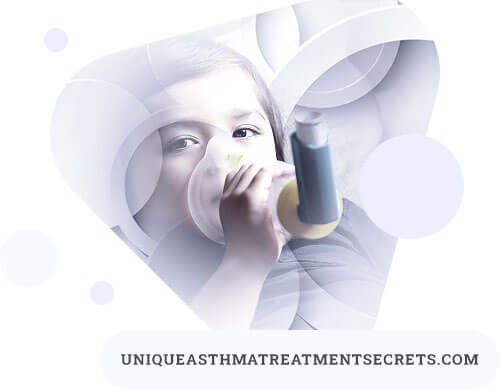
Ill asthmatic status stage is characterized by sharply pronounced arterial hypoxemia (pO2 within 40-50 mm Hg) and increasing hypercapnia (pCO2 above 80 mm Hg) with the development of respiratory acidotic coma. There is marked diffuse cyanosis. Often dry mucous membranes, decreased tissue turgor (signs of dehydration) are determined. Breathing is gradually shortened and becomes less deep, which on auscultation is reflected by disappearance of rales and significant weakening of breathing noises with expansion of "mute" lung zones. Tachycardia is often combined with various cardiac arrhythmias. Death may occur from respiratory arrest or acute cardiac rhythm disorders due to myocardial hypoxia.
Separate forms of bronchial asthma have peculiarities of history, clinical manifestations and course.
Atopic B. a. more often begins in childhood or adolescence. Family history in more than 50% of cases reveals asthma or other atonic diseases, in the history of the patient - allergic rhinitis, atopic dermatitis. Suffocation attacks in atopic AR are often preceded by prodromal symptoms: itching in the nose and nasopharynx, stuffy nose, sometimes itching in the chin, neck, interscapular area. The attack often begins with a dry cough, then quickly develops a typical picture of expiratory choking with distant dry rales. Usually the attack can be quickly controlled with β-adrenomimetics or eufillin; it ends with small amounts of light viscous sputum. After the attack, auscultatory symptoms of asthma are completely eliminated or remain minimal.
Atopic asthma is characterized by a relatively mild course, and late development of complications. A severe course, the development of asthmatic status are rare. In the first years of the disease remissions are typical when contact with allergens is terminated. Spontaneous remissions are not uncommon. Complete recovery in atopic B. a. in adults is rare.
Infection-dependent B. a. occurs in individuals of different ages, but adults are more often affected. A family history of asthma is relatively common, and atopic diseases are rare. Combination of B.a. with polyposis rhinosinusitis is characteristic. The onset of the disease is usually associated with acute, more often viral infections, or with exacerbations of chronic respiratory diseases (sinusitis, bronchitis, pneumonia). Choking attacks are characterized by less acute development, longer duration, less clear and rapid resolution in response to the use of adrenomimetics than in atopic B. a.. After the attack is over, auscultation of the lungs retains rigid breathing with prolonged exhalation, dry buzzing rales, and damp rales in the presence of inflammatory exudate in the bronchi. In this form of B. a., a severe course with recurrent asthmatic statuses is more common, and complications develop more quickly.
Aspirin asthma in typical cases is characterized by a combination of B.a. with recurrent polyposis of the nose and its accessory sinuses and intolerance to acetylsalicylic acid (the so-called aspirin triad, sometimes referred to as the asthma triad). However, nasal polyposis is sometimes absent. Adult women are more often affected, but the disease also occurs in children. It usually begins with polyposis rhinosinusitis; polyps quickly recur after removal. At some stage of the disease after another polypectomy or taking aspirin, analgin, B. a. is added, which manifestations are preserved later and without taking non-steroidal anti-inflammatory drugs. Administration of these drugs invariably causes exacerbations of the disease of varying severity - from manifestations of rhinitis to severe asthmatic status with lethal outcome. Polypectomies are also often accompanied by severe exacerbations of B. a. Most clinicians believe that aspirin-induced B. a. is characterized by a severe course. Atopy is rare among these patients.
Effort asthma, or post-loading bronchospasm, does not seem to be an independent form of B. a. It is established that in 50-90% of patients with any form of B. a. physical effort can cause an attack of suffocation 2-10 minutes after the end of the load. The attacks are rarely severe, last for 5-10 min, sometimes up to 1 h; they disappear without medication or after inhalation of a β-adrenomimetic. Physical effort asthma is more common in children than in adults. It has been observed that certain types of physical exertion (running, playing soccer, basketball) especially often cause post-exertion bronchospasm. Lifting weights is less dangerous; swimming and rowing are relatively well tolerated. The duration of physical activity also matters. Under conditions of a provocation test, loads of 6-8 min are usually given; with a longer load (12-16 min), the severity of post-loading bronchospasm may be less - the patient seems to jump over the bronchospasm.
Complications
Prolonged B. a. is complicated by pulmonary emphysema, often by chronic nonspecific bronchitis, pneumosclerosis, development of pulmonary heart, with the subsequent formation of chronic pulmonary-heart failure. These complications occur much faster in infectious-dependent than in atopic form of the disease. Short-term loss of consciousness (bettolepsy) is possible at the height of an attack of suffocation or a prolonged cough attack. In severe attacks lung ruptures in areas of bullous emphysema with the development of pneumothorax and pneumomediastinum are sometimes noted. Complications are often observed due to the long-term therapy of B. a. with glucocorticoids: obesity, arterial hypertension, severe osteoporosis, which may cause spontaneous rib fractures during B. a. attacks. When glucocorticoids are used continuously, a hormone-dependent course of B. a. is formed in a relatively short time (sometimes within 3-5 weeks); withdrawal of glucocorticoids can cause severe asthmatic status, threatening a fatal outcome.
Diagnosis
Analysis of clinical picture and purposeful examination of a patient allow to solve three basic diagnostic problems: to confirm (or to reject) the presence of B. a., to define its form, to establish the spectrum of allergens (at allergic B. a.) or pseudoallergens having etiological significance for B. a. at the given patient. The latter task is solved with the participation of allergologists.
The diagnosis of bronchial asthma is based on the following criteria: characteristic attacks of expiratory choking with distant wheezing; significant differences in exhalation power (sharp decrease) and outside the attack: effectiveness of β-adrenomimetics in relieving the attacks of choking; eosinophilia of blood and especially sputum; presence of concomitant allergic or polyposis rhinosinusopathy. The presence of B. a. is confirmed by characteristic changes in the BFD; less specific are the data of X-ray examination outside an asthma attack. Of the latter, signs of chronic pulmonary emphysema and pneumosclerosis (more often found in infectious-dependent asthma) and changes of paranasal sinuses - signs of mucous membrane edema, polyposis, sometimes purulent process - can prove in favor of possible presence of B. a. In atopic B. a., radiological changes in the lungs outside the attack of suffocation may be absent even years after the onset of the disease.
The main significance for B. a. diagnosis is the detection of bronchial obstruction (as the leading type of ventilation disorders in B. a.) and, most importantly, bronchial hyperresponsiveness, characteristic for B. a., determined by the dynamics of ABP in provocation tests with inhalation of physiological active substances (acetylcholine, histamine, etc.), by hyperventilation, physical exercise. Bronchial obstruction is determined by a decrease in forced vital capacity during the first second of exhalation (FVEL1) and exhalation power according to pneumotachometry. The latter method is very simple and can be used by a physician in a regular outpatient appointment, including to identify the so-called hidden bronchospasm, often found in patients with B. a. If the expiratory power, measured before and 5, 10 and 20 minutes after inhalation by a patient of one dose of Alupent (or other β-adrenomimetics in a metered hand inhaler), increases by 20% or more, then the test is positive, indicating the existing bronchospasm. At the same time, a negative test in the remission phase with normal initial exhalation power does not give grounds to reject the diagnosis of B. a.
The degree of nonspecific bronchial hyperresponsiveness is evaluated in the remission phase of B. a. using provocative inhalation tests with acetylcholine (carbocholine), sometimes histamine, PgF2α, β-adrenoblocking drugs. These tests, sometimes necessary when the diagnosis of B. a. is doubtful, are performed only under hospital conditions. The provocation test is considered positive if after inhalation of acetylcholine solution, the FEL and/or exhalation power decreases by more than 20%; in some cases, a clinically developed attack of B. a. A positive acetylcholine test confirms the diagnosis of B. a., a negative allows rejecting it with a high degree of probability.
The diagnosis of certain forms of B. a. is substantially based on clinical data, the analysis of which, if necessary, is supplemented by special tests and allergological examination.
Aspirin asthma is suspected with a high probability if there is a clear association of attacks with intake of aspirin or other non-steroidal anti-inflammatory drugs, and if asthma is the first manifestation of intolerance to these drugs, especially in women over 30 years, without atopy in personal and family history and suffering from pansinusitis or nasal polyposis, complementary to the aspirin triad. The diagnosis is more reliable if normal blood lgE levels are detected during B. a. attacks in the presence of blood eosinophilia. In doubtful cases in specialized institutions, an oral provocation test with acetylsalicylic acid (in minimal doses) is sometimes performed, but widespread use of this test cannot be recommended because of the possibility of severe reactions.
Physical effort asthma is established according to the anamnesis and the results of a provocative test with dosed (using an ergometer) physical exertion, which is usually performed under hospital conditions in the remission phase of the disease and in the absence of contraindications (heart disease, thrombophlebitis of lower extremities, high degree of myopia, etc.). The test is considered positive if within 20 min after performing the physical effort the FEL) and (or) exhalation power decreases by 20% or more or there is a clinically pronounced attack of suffocation (usually not severe). A positive test is an objective indicator of bronchial hyperresponsiveness and can be used to confirm the diagnosis of BP.
Atopic B. a. is recognized by the peculiarities of the clinical course, the presence of concomitant manifestations of atopy (pollinosis, atopic dermatitis, food allergies, etc.), family and allergic history data. The diagnosis is confirmed by the detection of reactive sensitization and positive results of elimination tests (cessation of contact with suspected allergens), and provocation tests with specific allergens. Atonic B.a. is characterized by an increased content of total serum lgE, as well as the presence of allergen-specific lgE. Relatively often there is a decrease in the number of T-lymphocytes, especially T-suppressors.
Infection-dependent B. a. is supposed primarily in cases of occurrence of suffocation attacks against the background of already formed chronic bronchitis, chronic pneumonia, or in the presence of chronic foci of infection in the upper respiratory tract. However, in all cases it is necessary to differentiate between infectious-dependent and atopic forms of B.a. The infectious-dependent B.a. is supported by delayed onset and longer duration of choking attacks, their frequent association with acute or acute chronic respiratory infection, propensity to develop asthmatic status, absence of patients with reactive sensitization, positive skin and inhalation provocation tests with bacterial allergens.
Differential diagnosis is made most often between infectious-dependent B. a., chronic obstructive bronchitis, whose manifestations, including the auscultatory picture, may be similar. Blood and sputum eosinophilia, the presence of allergic or polyposis rhinosinusitis, a positive test to detect latent bronchospasm, and therapeutic efficacy of anti-asthmatic drugs are evidence in favor of B. a.. The same criteria, as well as the results of allergological examination, are used for differential diagnosis of B.a. with asthma-like bronchospasm in carcinoid syndrome, systemic mastocytosis, irritation of trachea or bronchi by a foreign body, compression by a tumor, enlarged lymph nodes, aortic aneurysm. Tracheobronchial dyskinesia (expiratory stenosis of the trachea and bronchi) in combination with chronic bronchitis is accompanied by expiratory difficulties in breathing, without other characteristic signs of B. a., the diagnosis is established by bronchoscopic examination. At radiological detection of pulmonary infiltrates in patients with blood hypereosinophilia and suffocation attacks, differential diagnosis of B. a. with volatile eosinophilic infiltrates, allergic bronchopulmonary aspergillosis, as well as with the pulmonary form of nodular periarteritis is necessary. It is based on the results of targeted diagnostic studies, confirming or excluding these diseases. Sometimes it is necessary to differentiate B.a. with hyperventilation syndrome (in hysteria, organic brain lesions), which is manifested by tachypnea and hypocapnia, but there are no typical signs of bronchospasm. In doubtful cases, inhaled acetylcholine test is used to exclude B. a.
Treatment
In B. a. patients treatment there are distinguished urgent measures to relieve choking attack and remove patients from asthmatic status, and complex therapy, aimed at the disease itself and secondary prevention of B. a. attacks Indications for hospitalization at the beginning of the disease are determined by the need to clarify the diagnosis, the severity of patients with marked exacerbations (in prostatitis and asthma status); hospitalization in allergology departments is preferable in the phase of remission, when specific diagnostics can be performed
Emergency therapy of a bronchial asthma attack in a mild course and in the early stage of its development is usually carried out by the patient himself according to the previously received recommendations of the doctor. It is often limited to inhalation of 1-2 doses of β-adrenomimetic (alupent, salbutamol, berotek, etc.) or atropine-like bronchodilator (atrovent), or the combined drug berodual (berotek and atrovent) from a metered hand inhaler. The choice of the drug, its single and maximum daily dose is performed by a physician, based on the results of a comparative assessment of the effect of different doses of these bronchodilators in this patient both on bronchial patency (by dynamics of FEL1, expiratory power), and on heart rate and BP. When prescribing β-adrenomimetics, the patient is warned about the danger of their overdose (due to the possibility of worsening bronchospasm by the so-called ricochet mechanism and cardiotoxic action) and allowed without direct medical supervision to inhale no more than 8 doses daily; if there is a need for more inhalations, the patient should consult a physician.
In moderate and severe attacks of B. a., especially with insufficient effect of metered-dose inhalation of bronchodilators from a hand-held inhaler, the doctor shall provide emergency aid, using not only medication, but also non-drug effects on the patient, including psychotherapy. The treatment starts with instillation of 5-10 ml of 2.4% eufillin solution into a vein, and if there is no such possibility (and at a relatively early stage of the attack) an adult patient should take eufillin poured from an ampoule into a glass and mixed with 1 dessert spoon of vodka, or 1-2 tablespoons of alcohol solution in a mixture containing 3 g of eufillin, 40 ml of simple syrup and 360 ml of 12% wine alcohol solution. Simultaneously, to quickly get an expectorant and increase the bronchodilator effect the patient is given to drink (2-3 glasses) hot milk with Borjomi (1:1) or sodium hydrogen carbonate (1/2 teaspoon per glass), tea from chest gatherings (except for atopic BP herbs to which the patient is allergic) or regular hot tea or coffee (given the patient's desire and his experience of relieving such attacks before).
Great attention should be paid to the mental state of the patient, the elimination of often arising "respiratory panic" - irrational frequency and dysrhythmia of breathing, aggravating pulmonary ventilation disorders.
The patient should be reassured, assured that the attack will be resolved soon, help the patient choose the optimal breathing rhythm for the conditions of the attack (the ratio of exhalation and exhalation time, breathing depth and frequency), posture, and the location of the patient in the room (distance from heaters, open ventilation window, odor sources, etc.). Often relief for the patient brings breathing with resistance to exhalation at the level of the lip slit (exhalation at almost closed lips); this reduces expiratory contraction of the walls of the trachea and bronchi. In some cases the resolution of the attack is facilitated by simple reflex therapy: placing the hands or feet in hot water, rubbing the skin of the limbs and chest, application of mustard pads, etc.
If there is no positive dynamics in the patient's condition 15-25 minutes after eufillin administration, drug therapy should be continued. If there are no signs of β-adrenomimetics overdose (finger tremors, marked tachycardia, increased systolic BP), it is advisable to repeat their inhalation (2 doses) with control of its correctness (sometimes the drug is not inhaled by patient and lingers in the mouth) or to give patient subcutaneously adrenaline (0.3 ml 0.1% solution) or ephedrine (0.5-1 ml 5% solution). If an attack cannot be stopped within 1 hour, intravenous 60 mg prednisolone or 8 mg dexamethasone shall be administered. and the patient shall be hospitalized with suspected development of asthmatic status.
Intensive therapy of asthmatic status and, if necessary, resuscitation measures can be fully implemented only in the hospital. Therefore, all patients with asthmatic status (as well as with suspected development) are subject to urgent hospitalization, if possible in the department or a ward of intensive care and resuscitation. The main directions of treatment include restoration of sensitivity (unblocking) of bronchial β-adrenoreceptors, elimination of bronchial mechanical obstruction, correction of hypoxemia, hypercapnia and disorders of acid-base balance, as well as fluid administration, mandatory not only in general dehydration, but also as a means of bronchial hydration, necessary to reduce the viscosity of bronchial gland secretion and sputum.
In the pre-hospital phase the patient is given intravenous prednisolone (60-90 mg). If there are signs of β-adrenomimetic overdose, additional administration of the latter is contraindicated: manual inhalers should be stopped immediately. If there is no overdose, the patient can be given 0.3 ml 0.1% adrenaline solution or 0.5 ml 0.05% alupent (orciprenaline sulfate) solution subcutaneously, but a slow intravenous injection of 10 ml 2.4% eufillin solution is preferred. Because of the danger of ventricular fibrillation, simultaneous administration of corglicone, strophantine or other cardiac glycosides is strongly contraindicated with eufillin. Indications for the use of the latter in patients without decompensation of pulmonary heart in general are absent (in asthmatic status pathogenesis of tachycardia excludes the possibility of its control by cardiac glycosides, and the occurrence of extrasystole creates a direct contraindication to their use). Further treatment is carried out in a hospital.
In stage I of asthmatic status, prednisolone in a dose of 60 mg (or methylprednisolone, dexamethasone in equivalent doses) is administered intravenously every 4-6 hours until the patient is removed from the asthmatic status. At the same time, glucocorticoids are prescribed orally (30-60 mg per day of prednisolone or equivalent doses of other drugs). If necessary, especially in patients with hormone-dependent B.A., the doses of prednisolone may be increased significantly - up to 1000 mg during the first 12 hours. Upon achieving the effect, the daily dose of glucocorticoids shall be decreased rapidly, and after 7-8 days, the maintenance doses shall be switched to (in patients with hormone-dependent course of B. a.), or these drugs shall be discontinued. Infusion therapy shall be started from the moment of admission of a patient. Eufillin is administered intravenously by drip in isotonic sodium chloride solution - 1.5-2 g per day: if poor tolerance (nausea, vomiting, heart rhythm disturbance), the drug dose is reduced by half, and if there is no bronchodilator effect, its administration is stopped. Volume of intravenous fluid should be at least 2 liters per day. In addition to isotonic sodium chloride solution 5% glucose solution, polyglucin, reopolyglucin shall be administered. Continuous inhalation of humidified oxygen through a nasal catheter is used. In order to improve bronchial drainage at this stage of asthmatic status, potassium iodide 3% solution (if there are no contraindications for iodine) shall be administered - 20 ml every 3-4 hours until decrease in sputum viscosity or appearance of iodine signs (rhinorrhea, lacrimation), after which the drug is discontinued or its frequency is reduced by the same amount to 2-3 times a day; bisolvon is prescribed simultaneously (its expectorant action appears later), vibration chest massage is performed.
In stage II of asthmatic status, in addition to the therapy described above, additional measures are taken to eliminate hypoxemia, intensified therapy aimed at improving bronchial permeability and bronchial drainage. Inhalation of helium-oxygen mixture is used. Volume of intravenous fluids is increased to 3 liters per day, and in severe dehydration - up to 4 liters. In order to obtain an expectorant effect, intravenous sodium bicarbonate 5% solution is given - 100 ml (if necessary to correct respiratory acidosis - 200 ml or more). If bronchial obstruction still increases, sometimes bronchoscopic lavage is used, i.e. lavage of the bronchial tree (under anesthesia with prednion or sodium oxybutyrate combined with seduksen or droperidol) with warm saline sodium chloride solution through an injectable fibrobronchoscope.
Transformation of asthmatic status into stage III, as evidenced by marked hypercapnia, decompensation of respiratory acidosis, is an indication for artificial lung ventilation (ALV), which is conducted with the following features: it is necessary to create high pressure in the breathing system (80-100 cm water column), breathing volumes should not be less than 0.8-1.2 L, the minute ventilation volume at the beginning of ALV should be significantly increased (up to 30-35 L). Active exhalation is not recommended. Against the background of artificial lung ventilation, the bronchial tree is flushed and cleared through the intubation tube in combination with active percussive chest massage.
Complex treatment of patients with bronchial asthma is aimed at achieving remission of the disease and secondary prevention of its exacerbations and attacks of suffocation. All methods of B. a. treatment can be divided into specific ones, used in allergic B. a. (restriction or termination of contact with detected allergens, and hypersensitization by specific immunotherapy), and non-specific ones, used in all B. a. forms, including medication therapy, physiotherapy, resort treatment, therapeutic physical training, psychotherapy, acupuncture.
Specific methods of treatment are used by allergists, based on the results of allergological examination of the patient. The general practitioner may suspect a "guilty" allergen (e.g. pet hair or aquarium fish food), and before consulting the patient with an allergist, he has to advise the patient to stop contact with the suspected allergen. Specific immunotherapy is carried out by subcutaneous administration of allergen extracts in progressively increasing doses. It is generally accepted for the treatment of atopic asthma. This type of treatment is especially effective at an early stage of the disease, when it is possible to achieve long remissions in 60-70% of patients. Infectious allergens are used less frequently for therapeutic purposes. In some cases immunosorption, plasmapheresis, lymphocytapheresis are used, which have a temporary effect.
Treatment with anti-allergic immunoglobulins has an auxiliary value in atopic B. a. Immunomodulators (levamisole, T-activin, sodium nucleate, etc.) are indicated more for the treatment of associated inflammatory processes of the respiratory system, than the asthma itself.
Nonspecific drug therapy of patients with B. a. is limited to the minimum number of drugs, since polypragmasy in B. a. is fraught with serious complications. Cholinomimetics such as pilocarpine (even eye drops), or cholinesterase inhibitors (physostigmine), as well as β-adrenoblockers (obzidan, etc.) are absolutely contraindicated in B. a. patients. Rauwolfia preparations may provoke an attack of choking as well as vasomotor rhinitis. The use of opioids with histamine-lowering activity is undesirable. When antibiotic therapy is indicated, penicillins should be avoided, to which B. a. patients are often allergic. In aspirin-induced B.a. the use of acetylsalicylic acid, pyrazolone derivatives and all other analgesics and nonsteroidal anti-inflammatory drugs with antiprostaglandin effect is strictly prohibited (paracetamol can be used as an analgesic). Yellow-coated pills should not be prescribed to these patients.
There are a limited number of drugs that are really effective for asthma. These include bronchodilators, in particular β-adrenomimetics and xanthine derivatives (eufylline, caffeine), as well as intal and glucocorticoids. The basic course of B. a. patients usually includes the use of drugs of one or two of these groups. Among bronchodilators, β-adrenomimetics (Alupent, Berotek, etc.), as well as Atrovent, Berodual, contained in hand-held metered-dose inhalers, are most convenient for relieving mild attacks of suffocation (severe attacks usually require intravenous eufillin administration) and their prevention. Thus, at occurrence of attacks mainly at night they can be prevented by a single inhalation of a bronchodilator during a day just before going to bed. With relatively mild but frequent attacks, inhalation of these drugs in 1-2 doses up to 3-4 times a day (without physician supervision, no more than 8 doses a day) for a long time (several weeks) may be recommended, but you should strive to reduce the daily dose or temporarily withdraw β-adrenomimetics every time the patient feels better and even more so during remission of B. a. In a number of patients, it is effective to use noninhaled forms of adrenomimetics and other bronchodilators, administered orally or rectally (in enemas or suppositories), which prolongs the time of attack-preventing action of the drug by 2-3 h (compared with the inhaled route of administration). Ephedrine, theophedrine, antastman, eufillin (in tablets, micturas, solutions for microclysters), prolonged theophylline preparations, including domestic theolong and canophylline are successfully used. Phenigidine (adalat, corinfar) is also recommended for prevention of physical effort asthma. Prescription of these drugs allows to temporarily cancel or significantly reduce inhalation of bronchodilators and thus reduce for some time their direct, including irritating, effect on the bronchial wall.
One of the purposes of bronchodilators application is to increase the efficiency of bronchial drainage, which plays an important role in the periods of disease exacerbations, especially in patients with infection-dependent B.A. Bronchodilator inhalation is performed 10 min before the drainage procedure (positional and using special breathing exercises), carried out in the same way as in patients with chronic bronchitis. With the same purpose are used expectorants - bromhexin, lazolvan, mucosolvin; the most effective drugs are iodine (potassium iodide or sodium), but sometimes their use is prevented by vasomotor rhinitis (its exacerbation is possible) and the presence of idiosyncrasy to it. Inhaled proteo- and mucolytics (N-acetylcysteine, trypsin, etc.) should be avoided because of the possibility of provoking a severe choking attack.
Intal, which stabilizes mast cells, is prescribed to achieve remission in the course of B. a. (Intal has no ability to stop an attack that has occurred). It is more often effective in the atonic form of B. a., but an attempt to use it is justified in any form. Ketotifen (zaditen), which has a broader spectrum of action, is prescribed for the same purpose. To predict in advance the efficacy or ineffectiveness of these agents as well as comparative efficacy of bronchodilators at a given patient in most cases is difficult due to marked individual differences in reactions to drugs at patients with B. a. Therefore, empirical criteria and flexibility of a doctor's tactics in choice of therapy means, based on timely assessment of their efficiency at this patient have a greater value in treatment of B. a. patients. To objectivize the effect it is necessary to wider use researches of FEL1, expiratory capacity (especially during selection of bronchodilator) and other indexes of external respiratory function; however in some cases their dynamics under the influence of a drug is less expressive, than dynamics of clinical manifestations of choking attack and marked by a patient relief of breathing,
Glucocorticoids as means of basic therapy are used only at a severe course of B. a. and obviously insufficient effectiveness of all other possible methods of treatment. At the first necessity of using glucocorticoids, for example in connection with asthmatic status, it is necessary to aspire to their cancellation within the nearest 3-5 days irrespective of the value of the initial daily dose, since formation of a hormone-dependent course of B. a. and probability of known side effects are determined not so much by daily and course doses, as by duration of glucocorticoid use (even in small doses). The dosage form of the drugs used also matters. The safest of these is beclomethasone dipropionate (Becotide, Beclomet) in hand-held metered dose inhalers. The average daily dose corresponds to 8 breaths (2 breaths 4 times a day), but up to 16 breaths per day can be prescribed. In case of severe bronchospasm, prior inhalation of β-adrenomimetic is advisable for better penetration of the drug into the airways. In absence of effect, methylprednisolone or other glucocorticoids are indicated in short courses parenterally or orally, followed by conversion to becotide or intralesional, and if cancellation fails, to intermittent use of drug: every other day at an individual dose for each patient.
Surgical treatment (glomectomy) is ineffective and considered insufficiently justified.
The diet of B. a. patients should be sufficiently caloric, but not contributing to excessive weight; fluid is not restricted. Foods that, according to the anamnesis, have caused allergic reactions in the patient, and those containing exogenous histamine-liberators (fish, raw cabbage, radish, citrus fruits) shall be excluded from the diet; cooking and confectionery products - jellies, creams, etc., colored with yellow dye (tartrazine may be present) - are contraindicated for aspirin asthma.
Physiotherapy is used to treat chronic inflammatory processes in the lungs and sinuses, as well as to stimulate adrenal function (inductothermy). A special place is occupied by acupuncture, which in some cases leads to long-term stable remission of B. a., and in exacerbations of the disease it helps many patients to improve their condition with a smaller amount of pharmacotherapy.
Climatotherapy often promotes remission of B. a., especially in young patients. There have been cases of complete cessation of moderately severe manifestations of B. a. on the day the patient arrived in a climate zone that is favorable for him. Sometimes this effect of climate change lasts for many months or even years, which encourages the patient to change his permanent place of residence. However, in most patients the effect of climatotherapy is temporary, and in different patients the reaction to the peculiarities of the climate is not the same. More often for patients with B. a. favorable climatic zones of the middle mountains with a warm dry climate (Kislovodsk), as well as the Southern coast of Crimea. Travel to these areas is recommended in remission or mild clinical manifestations of the disease.
Therapeutic physical training is important both as means of secondary prevention, and as a subsidiary element of BP attacks therapy. Systematic physical exercises and special respiratory gymnastics "discipline" breathing, help the patient to reduce the fatigue of respiratory muscles at bronchial obstruction due to more perfect distribution of load on them, more effective use of diaphragm movements at a rational ratio of respiratory frequency and depth, and also the duration of inhalation and exhalation. In remission periods and in case of non-serious B.A. with no signs of post-load bronchospasm, intensive muscular work causes expansion of the bronchial lumen, leads in the process of training to restructuring of the breathing regulation, makes it economical and contributes to reduction and relief of asphyxiation attacks.
With frequent attacks and a prolonged state of difficulty in breathing, special breathing exercises that promote full exhalation are appropriate. These include so-called sonic exercises (long exhalation with pronunciation of whistling or hissing sounds) and exhalation with resistance (through a straw under water, in various kinds of devices).
In conditions of outpatient treatment of patients with B. a. the method of volitional restriction of pulmonary ventilation and breath-holding on exhalation can be applied, but it is contraindicated in cases of asthmatic status, with circulatory insufficiency, and also with mental illnesses that prevent the necessary contact with the doctor. The method is based on the possibility of readjustment of breathing regulation (with appropriate training at rest) without additional oxygen demand for muscle work. We talk to a patient calmly, explain the aim of the exercises, then teach to relax muscles of shoulder girdle, back, abdomen in the most comfortable position - sitting at the table, with hands on knees or leaning on the table. During the first lessons, the doctor (or an LFC instructor) makes it reasonable for the patient to breathe shallowly, holding back the cough. Short breathing pauses of 2-3 seconds will help. The patient is taught volitional breath-holding on a calm exhalation. Later such training breath-holding up to 30-40 times a day, but with intervals of at least 5-7 minutes, patients shall perform independently with periodic medical supervision. The duration of voluntary apnea gradually increases. As the patient's condition improves, the frequency of bronchodilators should be reduced until they are completely discontinued. These recommendations cannot be extended to other medications, especially hormonal drugs. After achieving remission in uncomplicated cases, general exercises - walking, jogging, swimming, cycling - are prescribed. Maximum and submaximal loads are not indicated for patients with B. a..
It is recommended to use purposeful respiratory exercises, promoting bronchial drainage, short breath-holding after exhalation and coughing, continuous training of long volitional breath-holding, when having infection-dependent B.A. against chronic nonspecific lung diseases (pneumosclerosis, emphysema, chronic bronchitis, chronic pneumonia).
Prognosis
In adults suffering from B. a., recovery is rare. Regarding the ability to work and life, the prognosis depends on the form and severity of B. a. In atopic form of B. a. long remissions are possible - spontaneous (after cessation of contact with the allergen) or after specific immunotherapy. In mild form the work ability usually remains intact, in moderate form it is impaired in the acute phases, in severe form it is often accompanied by permanent disability (disability group III or II). The development of recurrent asthmatic states worsens the vital prognosis; in stage III asthmatic status, even with the use of ventilator-assisted ventilation, there is often a fatal outcome.
Primary prevention
The general reduction of B. a. morbidity is considered possible with the combined application of socio-hygienic and medical measures. Improvement of working and living conditions of the population, reduction of atmospheric air pollution in cities and at industrial enterprises, struggle against smoking, development of physical training and sports are directly related to B. a. prevention. Medical aspects of B. a. prevention include rational limitation of inoculations, struggle against self-medication, polypragmasy (especially for people with atopic constitution). Correct and timely treatment of so called pre asthmatic diseases - acute and chronic bronchitis, pneumonia, inflammatory upper respiratory tract diseases, pollinosis, year-round allergic rhinitis - is very important. In people suffering from these diseases, for individual prevention of B. a. great importance has hardening of the body, exercise, employment at enterprises with clean and normal temperature and humidity conditions. Especially differentiated approach to the choice of occupation and organization of the living environment should be taken by persons with signs of atopic constitution and the presence of asthma in a family history, to avoid their massive contact with highly antigenic substances.
By: Dr. Adil Shujaat


